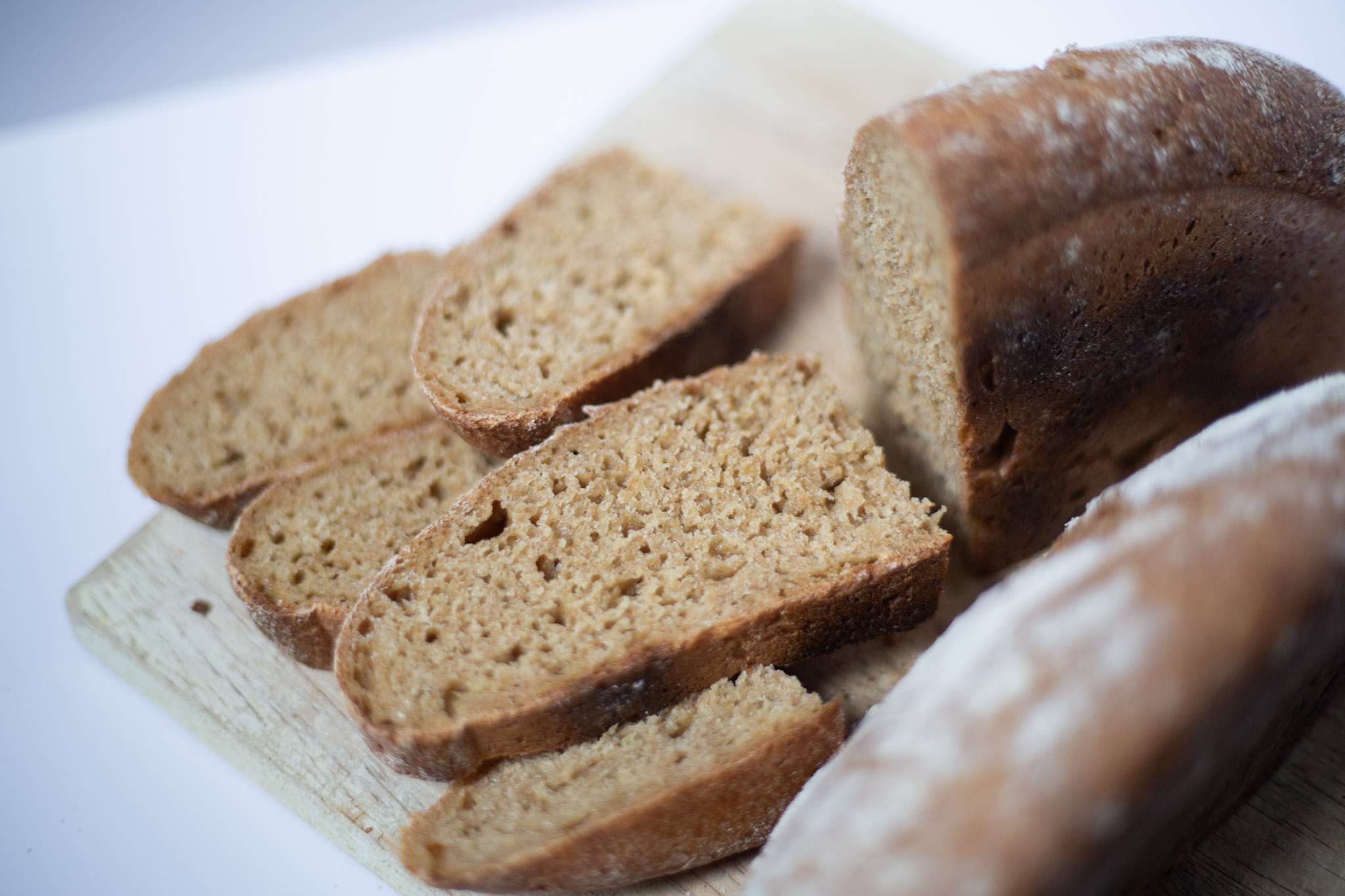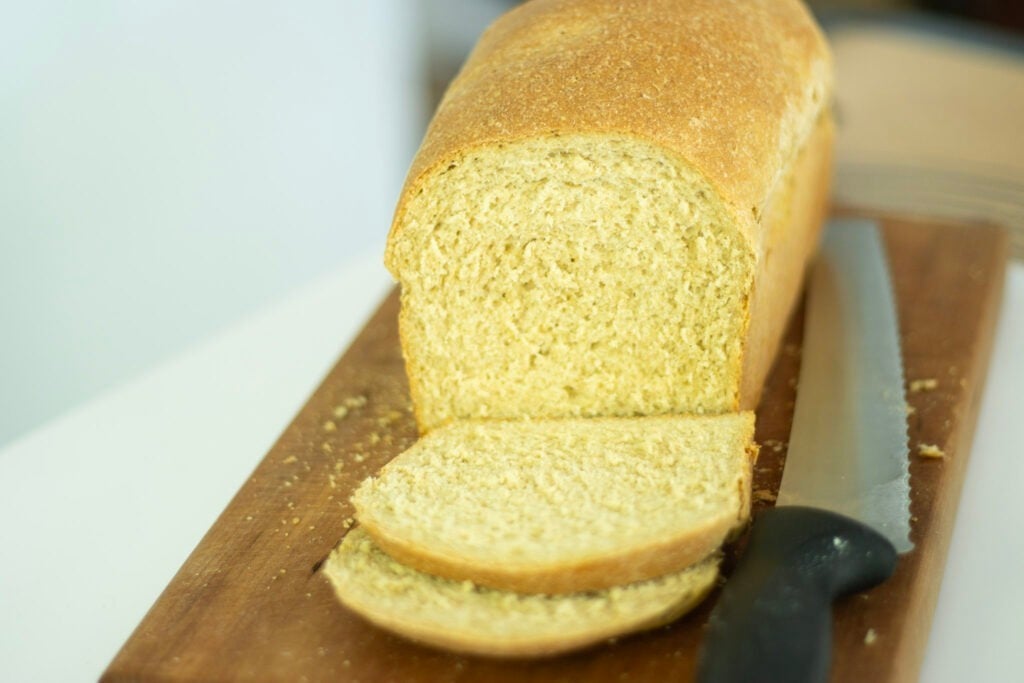Why You Need to be Milling Your Own Flour at Home
A few years ago, I read or watched a video about how store-bought flour loses the majority of it’s nutritional value before it reaches your hands. I learned that milling your own flour is the way to retain all of the nutrition.
This post contains affiliate links. I may make a small commission on sales at no extra cost to you

I set out on a research trip and found that this is very true. Whole grain flour is not shelf stable. The oils in the fresh flour will cause it to start going rancid rather quickly.
So, in order to ensure your flour is not rancid before you use it and that is has all the nutrients you want from whole grain, home-milled flour is the best option.
It is a great joy to see the world of freshly milled flour gaining ground and becoming more popular.
While there are many ways to increase the health benefits of the food you make, grinding your own wheat is one of the best ways, in my opinion!
Why to Mill your own wheat
There are many reasons to mill your own fresh ground flour!
One reason is the added fiber and nutrition of fresh milled flour.
Freshly milled flour has the bran and germ intact. This outer layer of the wheat berry contains all of the nutrients and fiber. Milling your own grains ensures you keep all of that nutrition!
Once they are sifted out, all you get is starch which will leave you feeling hungry soon after eating.
Whole grains are very filling and satisfy hunger much more than all purpose flour bread products.
Another reason is the flavor!
Fresh milled flour has incredible flavor. Bread made with it is packed with nutty flavor!
You will feel like you are tasting bread for the very first time when you make the first loaf of fresh milled bread.

How to Mill your own Flour
The first step is to purchase a grain mill.
Admittedly, the first one we purchased was very inexpensive and it was a hand crank model.
I only chose that one first to make sure this was something I would stick with before investing in a high powered model.
And, even though I stuck with it, I was exhausted every day from cranking that thing, ha ha!
About a year and a half ago, I went all in and bought the Nutrimill Classic Grain Mill.
I was hooked after the first milling. It was super fast and the flour was so fine and fluffy. The bread I baked with it was just so much more flavorful!

Which is the best grain mill?
There are basically 2 types of a flour mill: Impact and Stone.
Each of these is an electric mill. You can also get a hand mill for emergency purposes. Hand mills are great for power outages. I keep one on hand.
I recommend getting an impact mill. Let me explain:
- Impact mills are notoriously cheaper than stone mills.
- These types of mills can usually grind more wheat at a time.
- They produce fine flour that is well suited to bread baking.
- When deciding to get your own mill, ease of use is also important and impact mills are super easy to use and maintain.
- An impact mill will generally come with a limited lifetime warranty on the motor and milling heads.
The 3 top Impact Mills are:
- The Nutrimill Classic Grain Mill
- The most affordable option is the Nutrimill Impact Grain Mill
- Another option is the Wondermill Grain Mill
I have a coupon code for Nutrimill for $20 off: rose20
I have had people tell me they used a coffee grinder to mill their flour. This will make a less fine flour but can work in a pinch!
What about stone mills?
Stone mill grain mills are great! They are quite a bit more expensive though and do require a bit of a learning curve to get the right consistency of flour.
Which Wheat Berry should I use?
Hard Wheat is the best option for yeast or sourdough breads.
Hard White Wheat is the best for beginners in my opinion as it is milder in flavor and lighter overall.
This particular wheat berry is quite similar to using white flour or bread flour as far as how it behaves and the mildness of flavor.
Hard Red Wheat is also great for risen bread but has more flavor and can be a bit heavier.
Hard red wheat flour is similar to store bought whole wheat flour.
I have learned over time that combining wheat berries gives you more control of flavor and the lightness of the loaf.
Soft Wheat is commonly used for biscuits and pastries. In these instances, I use soft white wheat.
There are also a few Ancient Wheat varieties: Kamut, Einkorn, Spelt, and Emmer.
They are all very flavorful! However, due to a different gluten structure, ancient grains can take a bit of practice when using for bread baking.
For gluten free milling, I mill rice for rice flour.
Where can I get wheat berries?
I get my hard white wheat from Bread Beckers. They are super clean and come in a large bucket to store them.
I get my Einkorn from Einkorn.com, and the Kamut from the The Food Nanny
Another great option is Azure Standard if you have a pick up nearby.

Fun fact: You can grind popcorn in the grain mill to make freshly milled cornmeal!
The health benefits of whole grain flours is well documented and definitely more flavorful than commercial flour.
How to store wheat berries
Store wheat berries in an airtight container, preferably a bucket with an oxygen absorber and an airtight lid. Store at room temperature away from heat sources.
The shelf life of a bucket of wheat berries is generally 10 years if store properly.
Wheat Berry to Flour conversion
I prefer to try to only mill as many wheat berries as I need for flour to use right away.
If I mill a little too much, I will store it in the freezer until I need to use it.
Depending on how many cups of flour you need, use the following conversion:
- 2/3 cups of wheat berries will yield 1 cup of fresh flour
Using Fresh Milled Flour in Sourdough
Let’s briefly talk about using fresh milled flour in sourdough
Although it does take a little adjusting to transition your sourdough to freshly milled flour, it is absolutely worth it!
In my opinion, a long fermented loaf of whole grain sourdough bread is the healthiest, most nutritious bread product you can get!
In conclusion
Milling your own flour is a way to take the health benefits and flavor of your baked goods to the next level.
Taking control of the ingredients we use in our kitchen is a way to make sure we are serving the most nutritious food possible.
I suggest doing some research on this topic and finding out how amazing the world of fresh milled flour can be.
This is a movement that is gaining steam in recent years and I think it is one of the best things you can do to ensure the bread you serve is full of flavor and nutrients.





